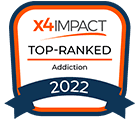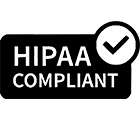Thrush is a fungal infection caused by Candida albicans, the same type of yeast that causes vaginal and some skin and internal infections. When it affects the tongue and inner lining of the mouth, it is referred to as thrush. This infection appears white and is most commonly seen in infants, older adults, and individuals with weakened immune systems, although it can also occur in otherwise healthy adults. To distinguish thrush from milk residue in infants, note that milk can be easily removed from the tongue with a light touch, whereas thrush plaques cannot be removed and require antifungal treatment. If white plaques on the tongue do not respond to an antifungal treatment course, it could indicate a different condition, such as hairy leukoplakia. Now that we know more about thrush, let’s examine the most common thrush treatments, namely prescription medications.
Prescription Medications Used for Thrush Treatment
- Diflucan (fluconazole): Taken orally, the dosage is 200 mg on the first day, followed by 100 mg each day for two weeks.
- Mycelex Troche (clotrimazole): This lozenge dissolves slowly in the mouth, with a recommended dose of 5 lozenges every day for two weeks.
- Nystop, Nyata (nystatin): The liquid form should be swished throughout the mouth for several minutes four times a day as directed. Alternatively, dissolve two lozenges in the mouth four to five times a day for two weeks.
- Sporanox (itraconazole): Reserved for patients who find other treatments ineffective or for those with AIDS. The liquid is taken in a dose of 100 mg twice a day or 200 mg once a day for one week.
- AmBisome, Fungizone (amphotericin B): Used in severe cases, this liquid should be swished and swallowed after every meal for 14 days.
Did you know? QuickMD can treat thrush through telemedicine. We can also provide you with an online fluconazole prescription or any of the other antifungal medications if indicated.
















